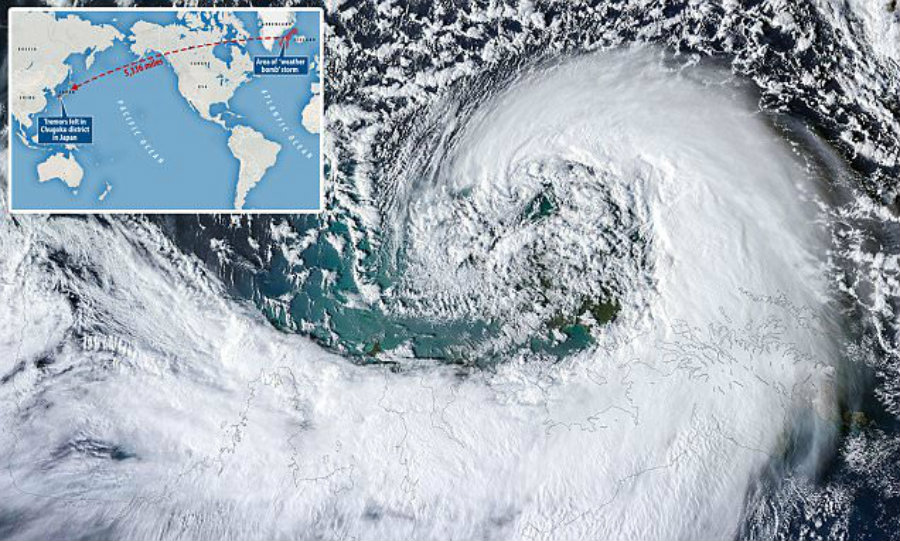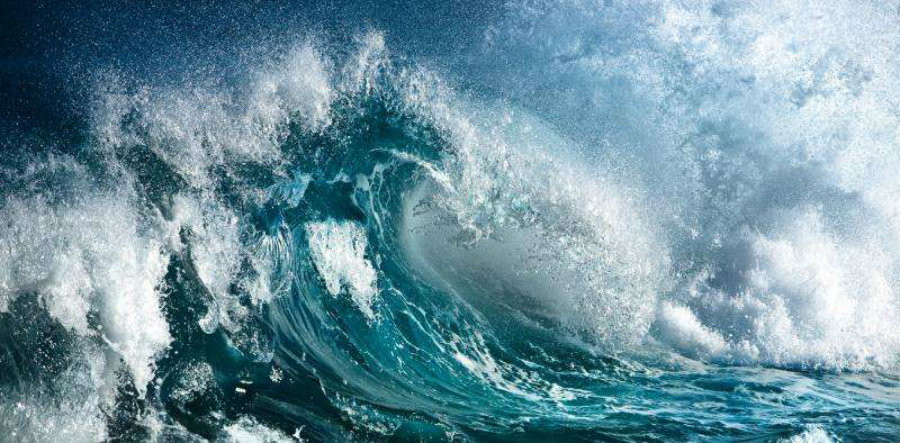A team of Japanese researchers used a ‘weather bomb’ in the North Atlantic to get a better understanding of a small vibration on Earth’s core that had never been detected before.
The research team of seismologists in Japan, led by Kiwamu Nishida and Ryota Takagi was able to detect for the first time a small tremor and an ‘S-wave’ caused by sound and crashing waves between Greenland and Iceland in a ‘weather bomb’ that happened in 2014. Weather bombs are a meteorological phenomenon characterized by a low-pressure system in which it’s barometric pressure drops at harsh levels in a very short period ( around 24 hours), the event causes hurricane forces, heavy winds, rains and in some cases snow.

Researchers tracked down a rare wave movement back to the weather bomb, something that hadn’t been accomplished before. The discovery leads science to a never-before-studied phenomenon and could provide a better understanding of Earth’s core, earthquake behavior and oceanic storms.
A deep ocean earthquake
Seismology is the study of earthquakes and elastic waves that happen trough Earth, specialists in the area also consider seismic sources that include tectonic, oceanic and atmospheric processes.
When the tectonic plates move or when high ocean moves happen, subtle waves travel trough earth’s ground, or rocks and seismologists can detect these movements from anywhere around the world. There are two types of seismic waves that are called surface and body waves.
The first category can only travel around surfaces on the planet such as water, but body waves can go trough the Earth’s layers. Body waves are divided into two types as well, Primary (P) waves and Secondary (S) waves.
Primary waves travel in the same direction and are the kind of movements that some animals can detect before and earthquake, Secondary waves are considered transverse and can only move through rock and are the “shake” motion humans feel when an earthquake starts.
Both P and S waves happen when an Earthquake occurs but at a much higher and intense level, according to experts the P waves are the first ones to arrive at scientists through seismometers, S waves arrive when the shaking begins.

Now, a research team published the first findings of S-wave movement in the Journal Science on Friday. Gaining more insight into the behavior of these waves and even tracking down the source.
Researchers Nishida, from the Earthquake Research Institute at Tokyo University and Takagi from the Research Center for Prediction of Earthquakes at Tohoku University, were able to detect the movement after using seismic equipment at 200 different sites and in the seafloor of Japan.
After studying the waves and results from the seismic equipment, the team realized they had captured both P wave and S wave movement due to the small tremors that happened in the oceanic floor. Since the team had over 200 stations with seismic equipment, the commonly-faint S waves were seen clearly by researchers determining the source back to the weather bomb.
“Seismic tomography is like an x-ray of Earth’s interior, except that it uses earthquakes for the illumination. Earthquakes are imperfect illuminators because they are clustered on plate boundaries, leaving much of the interior in the shadow,” wrote Nishida and Takagi in the published paper.
Colleagues have celebrated Nishida and Takagi’s discovery as a new set of glasses to observe Earth’s behavior and processes. Peter Gerstoft and Peter Bromirski, from San Diego’s University, ensured the development helped seismologists with new tools to study Earth’s deep structure.
“We’re potentially getting a suite of new seismic source locations that can be used to investigate the interior of the Earth,” said Peter Bromirski, who is a geophysical oceanographer in California, to the news site Wired.
The discovery also provides researchers with a better way to understand earthquakes and it’s detection in the future by isolating signals caused by a strong storm or a weather bomb and determine whether an earthquake could happen.
Source: Science Mag
